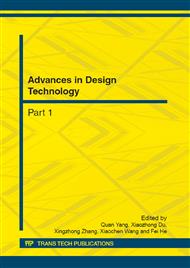p.1136
p.1140
p.1146
p.1150
p.1154
p.1158
p.1165
p.1169
p.1173
Numeral Simulation Study on Pipeline Corrosion Defects under Different Sizes and Pressures Based on FEM
Abstract:
Finite element analysis software ANSYS is used to establish a three-dimensional finite element model of the pipeline corrosion defects by applying the boundary conditions of square wave excitation to simulate the distributions of current and induced magnetic field in the pipeline under various defect volumes. The results of the study show: When there is no corrosion defect in the pipeline, the electric current in the pipeline is basically even distribution. The magnetic field is distributed for the symmetrical vortex shape from head to foot, and it has not obviously gather phenomenon. When there are some corrosion defects in the pipeline, the electric current forms partial symmetrical vortex shape in both sides of the corrosion defect, and it is obviously assembled in the defect place. The simulation results of the different size defects show that the maximum magnetic field strength and the maximum current value increase with the defect depth increasing, while the output voltage decreases with the defect depth increasing. For the analysis of the stress distributions of the pipeline corrosion defect with certain size under different pressures, it was found that the maximum stress is 596 MPa when the bearing limit work pressure of the pipeline is 7 MPa, which is smaller than the yield strength with ensuring the safely running of the pipelines with defects.
Info:
Periodical:
Pages:
1154-1157
Citation:
Online since:
November 2012
Authors:
Price:
Сopyright:
© 2012 Trans Tech Publications Ltd. All Rights Reserved
Share:
Citation:


